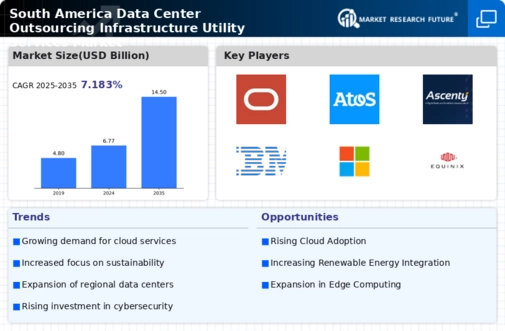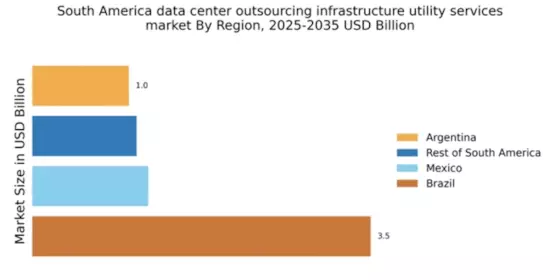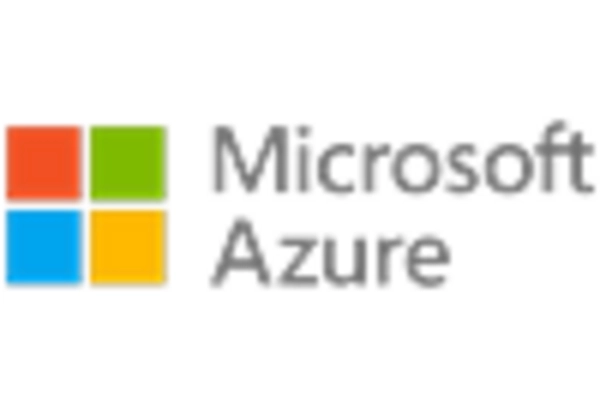Expansion of Internet Connectivity
The expansion of internet connectivity across South America is a crucial driver for the data center-outsourcing-infrastructure-utility-services market. With increasing internet penetration rates, more businesses are coming online, necessitating reliable data management solutions. As of 2025, internet penetration in South America is expected to exceed 70%, creating a larger customer base for data center services. This growth in connectivity is likely to stimulate demand for outsourcing, as companies seek to enhance their digital presence and operational capabilities. Furthermore, improved connectivity facilitates the adoption of cloud services, which are often outsourced, thereby further driving the market.
Increased Focus on Cost Efficiency
Cost efficiency remains a critical concern for businesses in South America, driving the data center-outsourcing-infrastructure-utility-services market. Companies are increasingly recognizing the financial benefits of outsourcing their data center operations rather than maintaining in-house facilities. By leveraging third-party services, organizations can reduce capital expenditures and operational costs. Reports suggest that outsourcing can lead to savings of up to 30% in operational costs. This trend is particularly pronounced among small and medium-sized enterprises (SMEs) that may lack the resources to invest in extensive infrastructure. As the competitive landscape intensifies, the pursuit of cost-effective solutions is likely to fuel the growth of the outsourcing market.
Emergence of Hybrid IT Environments
The emergence of hybrid IT environments is reshaping the data center-outsourcing-infrastructure-utility-services market in South America. Organizations are increasingly adopting a combination of on-premises and cloud-based solutions to optimize their IT infrastructure. This trend allows businesses to maintain control over sensitive data while leveraging the scalability and flexibility of cloud services. As hybrid models gain traction, the demand for outsourcing services that can seamlessly integrate these environments is likely to rise. It is estimated that by 2026, over 50% of enterprises in South America will adopt hybrid IT strategies, underscoring the potential for growth in the outsourcing market.
Growing Digital Transformation Initiatives
The ongoing digital transformation across various sectors in South America is a pivotal driver for the data center-outsourcing-infrastructure-utility-services market. Organizations are increasingly adopting advanced technologies such as artificial intelligence, big data analytics, and the Internet of Things (IoT). This shift necessitates robust data management and storage solutions, leading to a surge in demand for outsourcing services. In 2025, it is estimated that the digital transformation spending in South America will reach approximately $50 billion, indicating a substantial growth trajectory. As businesses seek to enhance operational efficiency and customer engagement, the reliance on outsourced data center services is likely to intensify, thereby propelling the market forward.
Regulatory Compliance and Data Sovereignty
The evolving regulatory landscape in South America is a significant driver for the data center-outsourcing-infrastructure-utility-services market. Governments are increasingly implementing stringent data protection laws, necessitating compliance from businesses. This has led to a heightened demand for outsourcing services that can ensure adherence to local regulations. For instance, the General Data Protection Regulation (GDPR) and similar laws in South America require organizations to manage data responsibly. As a result, companies are turning to specialized data center providers that can offer compliant solutions. The market for compliance-driven outsourcing is projected to grow by approximately 20% in the coming years, reflecting the critical need for regulatory adherence.


















Leave a Comment